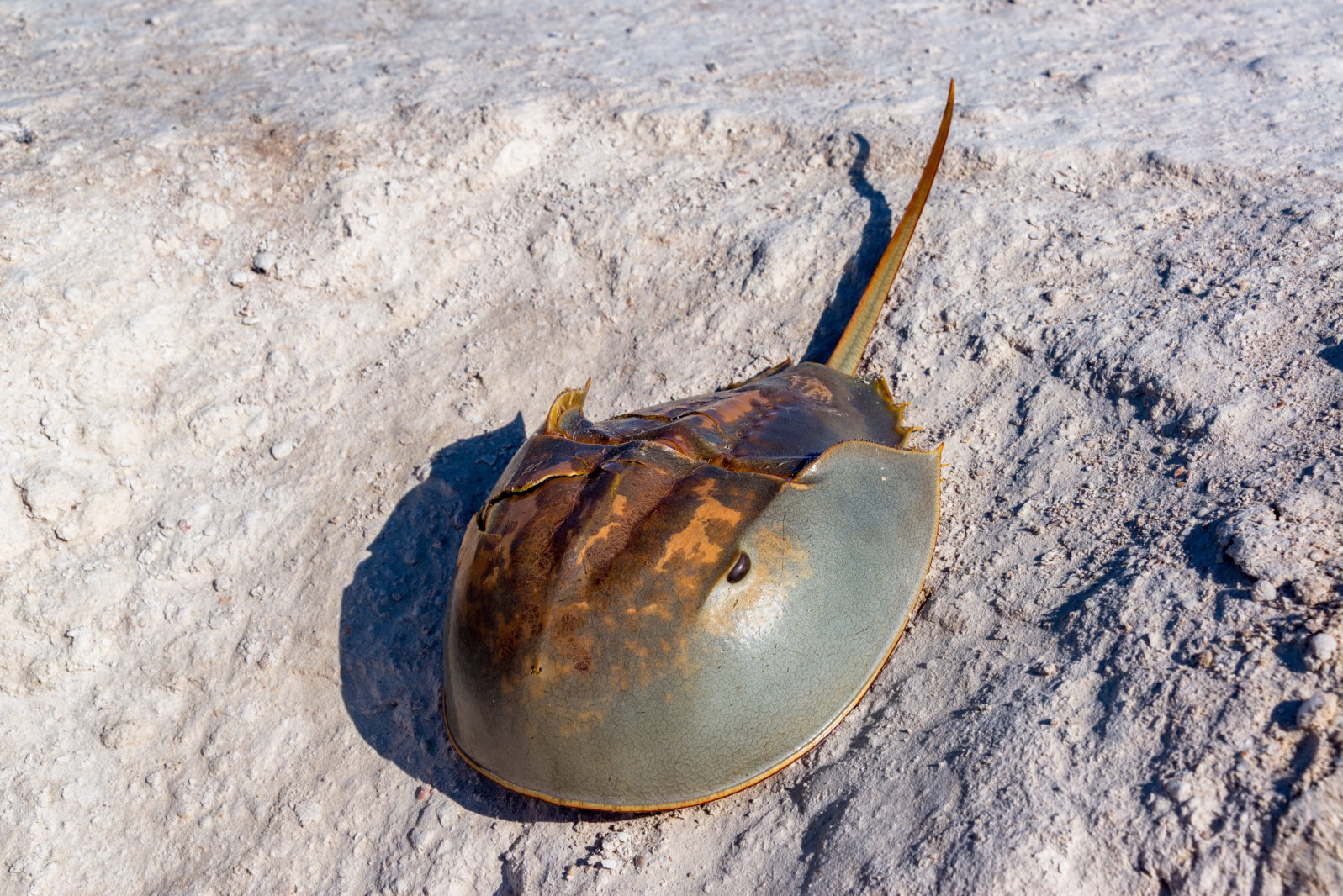Do Brains Really Evolve? The Horseshoe Crab’s Brain Didn’t
It’s very rare to find an intact fossil brain but a rare combination of minerals preserved one from 310 million years agoRecently, paleontologist Russell Bicknell and colleagues found a fossil horseshoe crab in the Yale Peabody Museum, originally from the Mazon Creek fossil beds near Chicago. That, in itself wasn’t spectacular but, for geological reasons, the creature’s brain was preserved, an extremely rare situation.
So how much had the horseshoe crab’s brain changed in 310 million years? Not at all, really:
A new beautifully preserved fossil of a horseshoe crab has now revealed that their brains have hardly changed since at least the Carboniferous Period…
The brain structure of the ancient crab is almost identical to that of living species. In fact, it is this extraordinary similarity that meant the researchers could be confident that what they were looking at was indeed the brain and other parts of the nervous system …
Despite horseshoe crabs often being referred to as living fossils, they have changed quite a bit in their external anatomy since they first evolved. But it seems that once the group of invertebrates had ended up with a brain structure that worked, there was little need to change it over the next 310 million years.
Josh Davis, “310-million-year-old fossil shows how little horseshoe crab brains have changed” at August 5, 2021
(to 1:47 min)
Fossil experts call that stasis: A life form that has reached a good, all-round solution stops evolving, perhaps for hundreds of millions of years
Horseshoe crabs, much older than the dinosaurs, may look like prehistoric crabs but they are more closely related to scorpions and spiders.
Evolutionary biologists have a word for “looking like a crab without actually being one”: carcinization — it is surprisingly common among some types of invertebrates.
Finding an intact brain that is just like a modern horseshoe crab’s brain enables paleontologists to make some guesses about the ancient animal’s behavior:
The preserved central nervous system lends insight into the ancient crab’s behavior, the researchers say. Because the fossil brain is so similar to the brains of modern horseshoe crabs, Bicknell says, it’s safe to say the ancient animal’s walking, breathing and even feeding habits were probably similar to horseshoe crabs’ today, including eating with their legs. “Imagine eating a hamburger with your elbows,” Bicknell says.
Rebecca Dzombak, “How fossilization preserved a 310-million-year-old horseshoe crab’s brain” at ScienceNews
To the extent that the horseshoe crab is more closely related to the spider, it may have a similar type of intelligence. But we can’t be sure just now. For example, the nautilus is a cousin of the octopus but, while the octopus is sometimes considered a “second genesis” of intelligence, on account of its braininess, no such thing is said of the nautilus.
One of the authors explains:
One of the challenges of interpreting ancient arthropod anatomy is the lack of close modern relatives available for comparison. But luckily for us, Euproops [the fossil horseshoe crab] can be compared to the four species of living horseshoe crabs.
Even to the untrained eye, a comparison of the fossil’s nervous system with that of a modern horseshoe crab (below) leaves little question that the same structures are found in both species, despite them being separated by 310 million years.
John Paterson et al., the Conversation , “Incredible fossil discovery shows ancient animal brain from 310 million years ago” at ScienceAlert (July 28, 2021)
We are left with the fact that a brain well suited to life today came into existence over three hundred million years ago. Was it slow or sudden? We cannot as yet say.
The paper is open access.
Note: Technically, the fossil horseshoe crab belongs to the extinct species Euproops danae and the modern ones belong to Limulus species. But the differences are not significant with respect to the type of brains they have (or had).
You may also wish to read: In what ways are spiders intelligent? The ability to perform simple cognitive functions does not appear to depend on the vertebrate brain as such
and
If we find life on exoplanets, some of it might be “crabs”. Over millions of years, many crustaceans gradually grew to look more and more like crabs, a process called convergent evolution. In an environment similar to Earth’s, we might expect life forms to converge on similar solutions. “Crabbiness” might be one of them.
